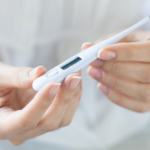But if there were no national data bank, the people of Olmstead County, Minn. (where the Mayo Clinic is located), provided the first tentative answer to this question. For decades, Mayo Clinic researchers have detailed the health and habits of residents of Olmstead County. Public Health reports detailing how much the population smokes and drinks, what they eat and their risk of developing disease have helped shape public health policy for the entire county. What’s more, patients with rare diseases, such as connective tissue disorders, in Olmsted County are almost always followed at the Mayo, ensuring accuracy of diagnosis. Scouring this databank for women who had undergone silicone breast surgery, researchers were able to provide an estimate of how likely a woman who had undergone silicone breast implants was to develop a connective tissue disorder.
The paper, published in the New England Journal of Medicine in 1994, found no increased risk of developing connective tissue disease.5 But it was largely ignored, at least by the courts. Under the weight of more than 400,000 potential claims, Dow Corning filed for bankruptcy, and the multi-billion dollar settlement collapsed.
The next year, the Nurses’ Health Study, reporting on the long-term health of 87,501 women, failed to demonstrate an increased risk for developing connective tissue disease in women with silicone breast implants.6 A Swedish study found similar results.7 In all, 20 subsequent studies failed to demonstrate risk, while only one, published in the Journal of the American Medical Association in 1996, reported a possible, small increased risk.8 This last study was widely criticized, because it did not require confirmation of the diagnosis by an independent physician.
Impact on My Practice
Eventually, I stopped seeing breast implant consultations; the office visits were uniformly adversarial. The women in the class action suit were not patients; they were plaintiffs. And although I sympathized with their pain and uncertainty, none of the 30 or so women I saw had evidence of an autoimmune disorder. Without exception, they were angry—angry at their surgeons who failed to warn them of potential complications, angry at Dow Corning and the FDA, who they blamed for marketing an unsafe product, and angry at me because I wouldn’t certify them for million-dollar payouts.
Juries and courts began to catch up with the science, and Dow Corning’s luck began to change. By 1995, the silicone implant makers were winning the majority of cases that went to trial. Judges became more selective in the evidence they would accept by “experts” who claimed a connection between silicone breast implants and connective tissue disease. The concept of junk science entered the popular lexicon.
